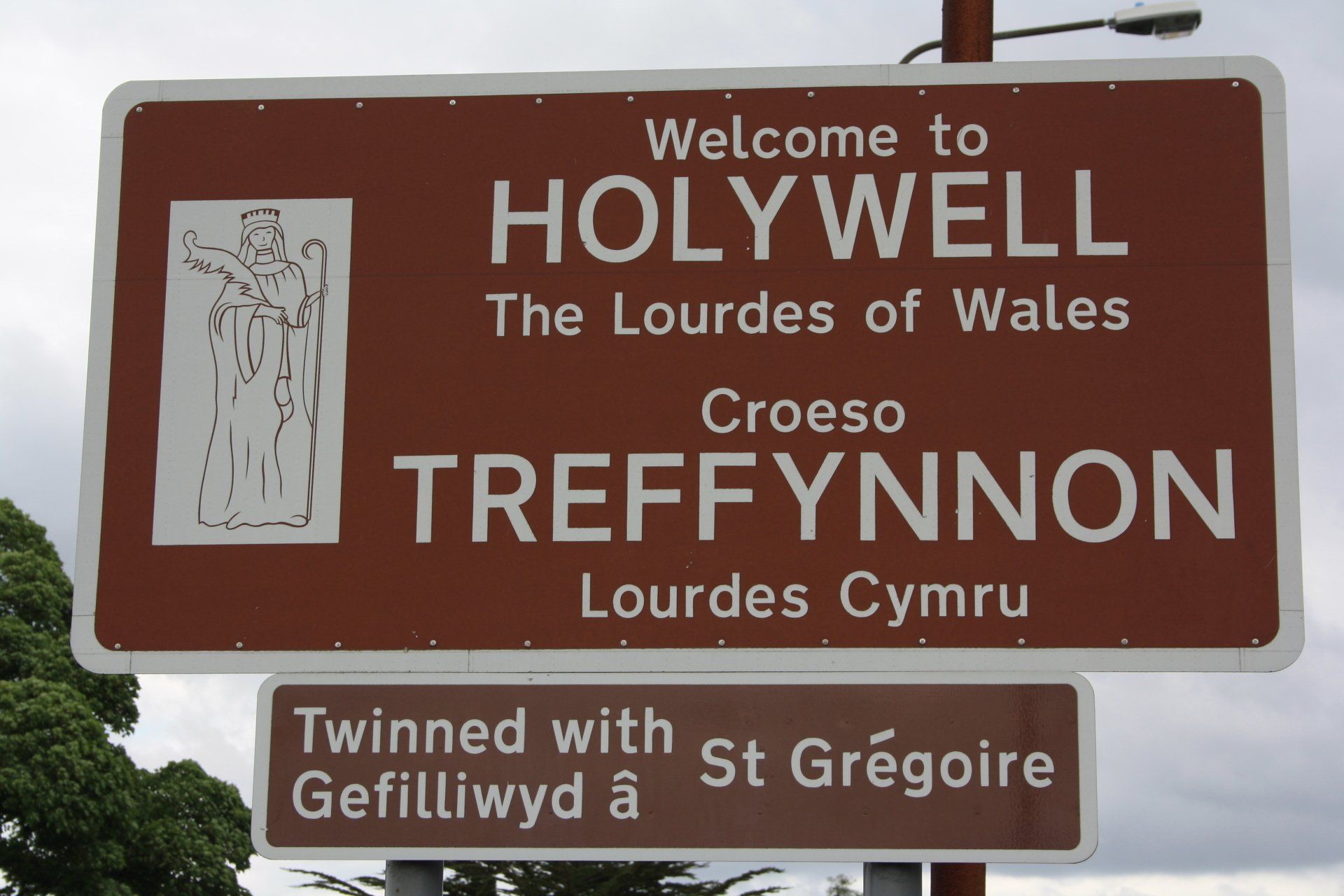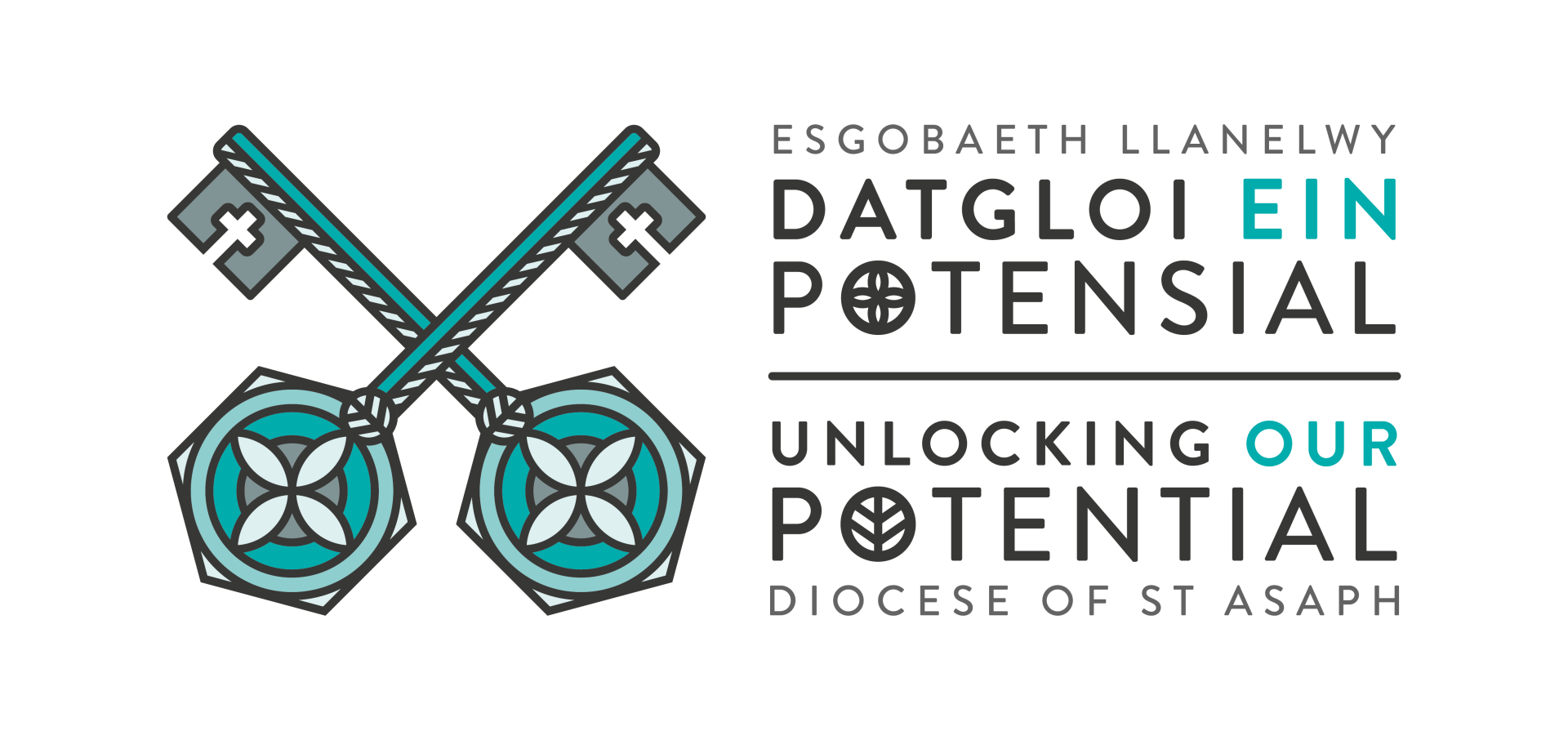A Brief History of the Church in Holywell
Holywell is an ancient place of pilgrimage, read a little more of our history.
The town of Holywell takes its name from the fact that in c650 a young and beautiful woman called Winifred was walking in the valley, when she was approached by a group of men, led by Prince Caradoc from Hawarden.
The Prince attempted to seduce Winefride but was refuted, at which he drew his sword and struck Winefride’s head from her body. Her uncle Saint Beuno, who founded a church where St James' now stands, was called and he replaced her head and she was restored to life. The place where her head had fallen erupted into a great spring, thus the holy well which gave our town its name. Over the years, Holywell gained the name 'The Lourdes of Wales' or 'Lourdes Cymru' as many pilgrims - from kings to paupers - came to seek healing at the well.
St Winifred and her Holy Well
No other shrine in the British Isles can claim over 1300 years of unbroken pilgrimage and worship.
St Winifred was of noble birth, the daughter of Tyfid and Gwenlo whose court was upon the hill that now overlooks the well and chapel. Her uncle was none other than St Beuno, one of the most venerated saints of Wales, and perhaps even more beloved than David in the north of the country. Having dedicated her life to God, through the inspiration of her uncle, Winifred rejected the lustful advances of the noble born Caradoc. She fled his anger, running towards Beuno’s church at the foot of the hill. To no avail, since Caradoc took hold of her, and in being rejected once again, drew his sword and decapitated her on the spot. Winifred's body fell to the ground while her head rolled a little further down the hill.
On hearing the suddenly interrupted screams of his niece, Beuno ran from his church to be confronted by a scene of butchery. Without hesitation, Beuno raised his arms and prayed to God for righteous vengeance to be brought down upon Caradoc. Those prayers were answered. With a tremendous rumble, the earth beneath the prince opened up and swallowed him whole.
Hurrying to where the head of Winifred had halted, Beuno saw that a tremendous torrent had emerged from the spot at which her head had fallen. He swept up Winifred’s head and taking it to her body, and in prayer placed it upon the stump of Winefride’s neck. She was immediately brought back to life, though she wore forever more a pale white scar about her throat.
The spring that had burst from the ground beneath her head, became renowned for its healing qualities. Infertility, lameness, leprosy, cancer, paralysis - all were healed.
Many people through the ages have made pilgrimage to this holy place. Richard I made pilgrimage to the shrine to ask Winifred for her blessing for his crusade to retake Jerusalem, Henry V walked on foot from Shrewsbury in thanksgiving for his victory at Agincourt, Edward IV took soil from about the well and rubbed it upon his crown in the hope that Winifred would grant him victory against his Lancastrian foes (she did, at Towton Moor!).
The stunning well chapel was paid for by Henry VII’s mother, Lady Margaret Beaufort in grateful thanks for her son’s victory at Bosworth, and even the Catholic James II and his wife, Mary of Modena made the journey to Holywell seeking a Catholic heir and son, the success of which brought about the Glorious Revolution of 1688.
Even the Reformation could not stop the flow of pilgrims to the well and shrine, though statues were smashed, and valuables hauled away. Still the pilgrims came, and still do - to take the waters and to draw near to God through Winifred's prayers.
Through whatever tribulations have beset the faithful, the well and shrine have remained, battered and bruised perhaps, but now gloriously restored. It continues to draw people to our town, seeking the life-giving spring of God's love and healing power.
Winifred is celebrated across the Church in Wales on her feast day, 3rd November. This is the Collect, the special prayer, set for the day:
Lord God, the fountain of all life,
who call us through the waters of baptism to die and rise with Christ:
grant that we who call to mind the life and death of your servant Winifred,
may, like her, consider ourselves dead to sin
but alive to you in Christ Jesus,
to whom with you and the Holy Spirit
be all honour and glory,
now and for ever. Amen.
St James' Church
It’s believed that this church was founded by St Beuno in the 7th century and dedicated originally to his niece, St Winefride.
The first stone church here was erected in the 14th century. Some of that building survives, notably the church tower and the pillars supporting the galleries. Most of the church we see today dates from 1769-70. The church stands in a hollow below the town of Holywell, which grew and prospered in the 17th, 18th and 19th centuries. This made it difficult for townspeople to hear the church bell ringing and by 1714 a bellman would walk the streets with a portable bell to inform them when it was time to go to church.
Also inside the church is a bassoon dating from 1765, when Wolfgang Amadeus Mozart was a child.
Several stained glass windows in the church relate to war and peace.
Inside the church is a memorial to Paul Panton, who died in 1797, and came from a family of local importance. The memorial was created by the great sculptor John Flaxman (1755-1826). He had a physical deformity and missed out on schooling, spending his formative years in the shop where his father moulded and sold plaster casts. He later created designs for Wedgwood pottery and designed monuments which are in Westminster Abbey and St Paul’s Cathedral.
A mutilated stone effigy in the church is thought to depict a 16th century vicar of the parish, holding an Elizabethan communion cup. Some people thought it was an effigy of St Winefride and chipped away many areas of the effigy. This apparently continued even after a drawing was made in 1892 showing parts of the right arm which are now missing.
Basingwerk Abbey
Basingwerk Abbey was established in about 1132 and moved to its site in Greenfield in 1157. The original monks came from Savigny in France and were incorporated into the Cistercian Order in 1147. This area of North east Wales was a disputed region in the medieval period, with many battles between the English and Welsh. The importance of the Abbey may be seen by the deeds bestowed on it by both the English kings and the Welsh princes. The Abbey flourished until the dissolution in 1536, many of the walls and foundations can still be seen today.
It is now part of the beautiful Greenfield Valley Heritage Park.




